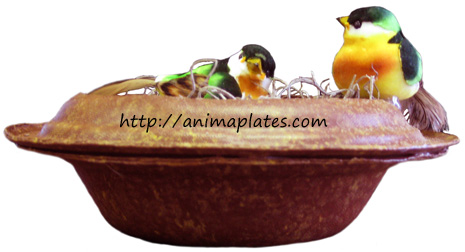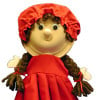What can you learn about bird nests?
Spring is a good time to teach about nests and how they are built.
Each kind of bird has a very distinctive nest. The nests that are found most frequently are the ones in the form of a "basket"; they are often found hidden in trees at the fork of branches.
Often, birds use organic materials such as twigs, moss, grass, leaves, feathers, etc. to make their nest. Sometimes, birds also use wool, animal hair, or man-made materials like fabric, paper, etc.
Some nests are woven and suspended. Others are built under a roof, under a ledge or against beams. These nests are built from fine mud which birds get in puddles and on the banks of a pond or a river. The mud is strengthened by straw. Inside the nest, there are feathers which make it comfortable. These nests are inhabited by swallows. Swallows sometimes form colonies by attaching one nest to the next; that saves them some work!
Other birds built their nest in the hollows of rock walls or in the hollows of trees.
The cuckoo has a rather interesting behaviour because it lives as a parasite on the nest of other birds. The female cuckoo can lay from 8 to 25 eggs per season, and lays them in various nests. When the cuckoo chicks hatch, they throw the eggs of the foster parents out of the nest to be able to take full advantage of the food supply!
In an educational context, nests, their shape, the colour of the eggs, etc. allow the children to develop their sense of observation. You can borrow books in the library or do research on the internet to find illustrations of different kinds of nests.
Sometimes the wind or a storm knocks a nest down. Why not bring it to class and observe the elaborate work of the birds. In spring also, with some luck, it is possible to find fragments of eggshells that the bird parents throw out of the nest.
You can also speak about predators of the various kinds of birds, about migrations, etc.
Also remind the students that if they are lucky enough to have birds that choose to build their nest near their house, they should not touch the baby birds because the parents might not continue to feed them.

Teaching with art
In my experience, teaching can be more effective if it is combined with a hands-on activity like a visual arts project. I have created many art projects with teaching resources that make it very easy to do apply this method, even if you are not an art teacher.








